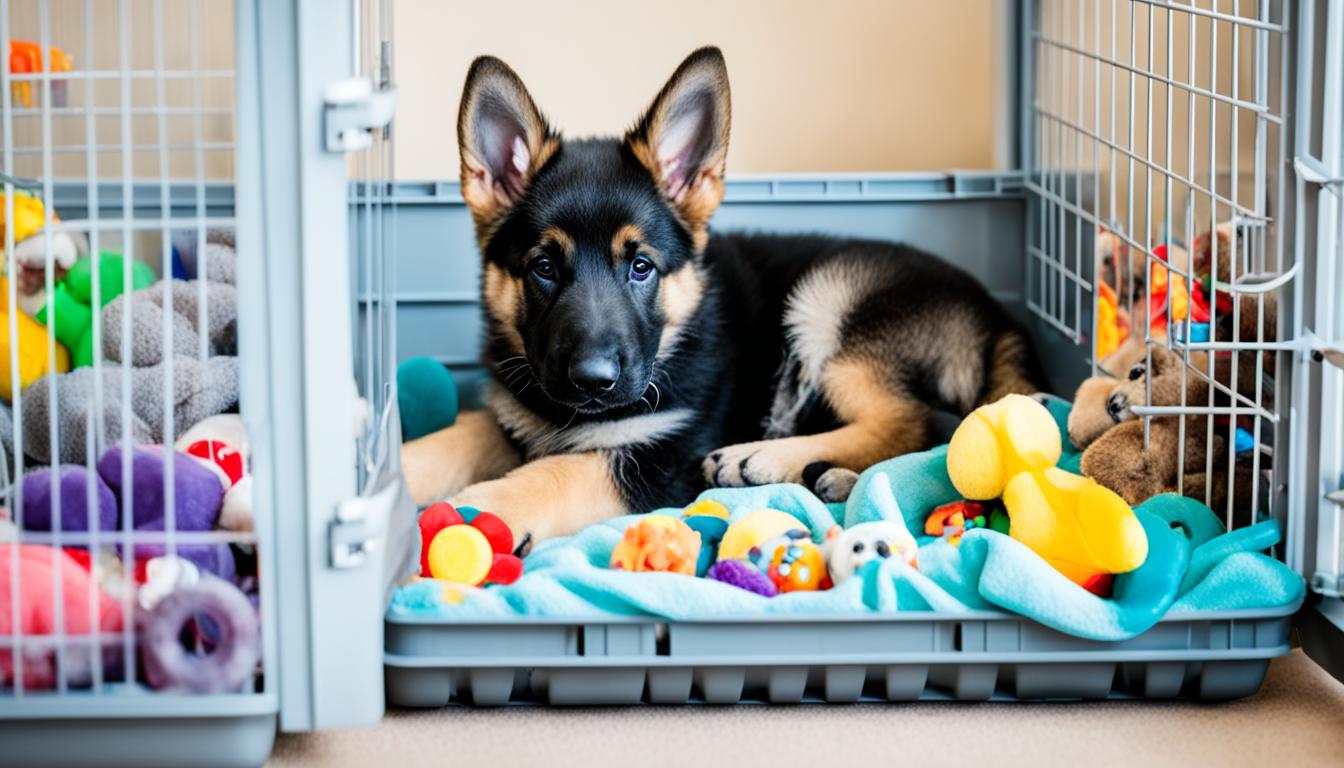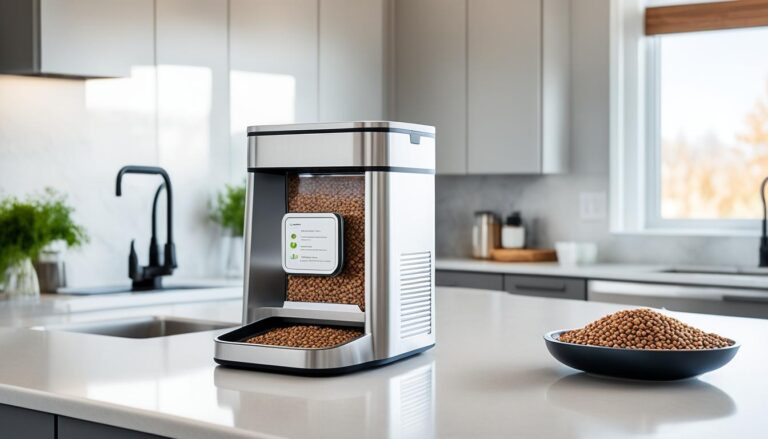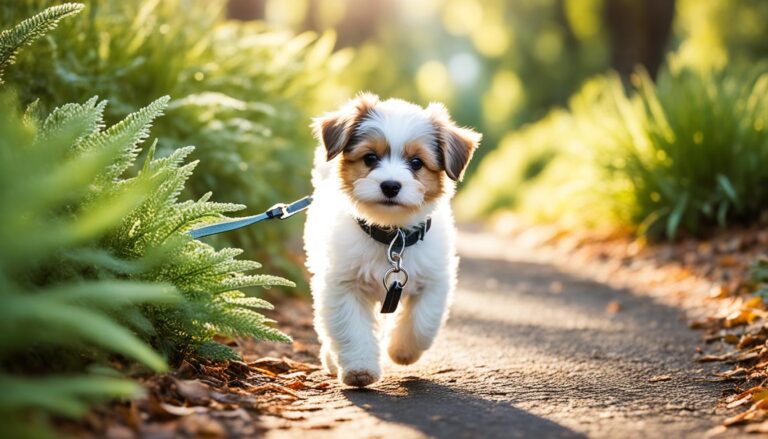Crate training German Shepherd puppies – Tips for crate training.
Thinking about crate training your German Shepherd pup? It’s essential to understand both the good and the bad sides. Crate training is a great tool, but it needs to be done right. As pet owners, it’s our responsibility to ensure our puppies are happy and healthy.
Remember, crates are not for punishment. Avoid keeping your pup inside for too long. This could make them sad, anxious, or misbehave. Proper crate training starts slow, uses rewards, and allows your pup to adapt at their own pace.
Crate can help with potty training but shouldn’t be the only method used. German Shepherd pups thrive on being social and active. Too much time in a crate could cause physical, mental, and behavior problems later on.
Key Takeaways:
- Crate training is a good method for German Shepherd puppies when done correctly.
- Leaving puppies in crates too long can cause sadness, anxiety, or bad behavior.
- Doing it right means introducing it slowly, using rewards, and letting the puppy get used to it over time.
- Don’t just use crates for potty training; puppies need lots of interaction and play.
- Too much time in a crate can have negative effects, like health issues, shyness, or going in the crate as adults.
Understanding the Benefits and Precautions of Crate Training
Crate training is great for young German Shepherds. It helps them feel safe, stops them from ruining things, and teaches them how to use the bathroom outside. But, it’s important to be careful. Wrong crate use, if a puppy is in it too long or to punish them, can cause big problems.
These problems might include being scared when alone, acting aggressively, or having health issues. To use a crate right, introduce it slowly, reward good behavior, and make sure they don’t stay in it all day. Time in the crate should be mixed with playing, meeting others, and getting enough exercise. This way, by knowing how to use crates well and what to avoid, owners can guide their pups to becoming happy, healthy, and obedient dogs.
Avoiding Common Pitfalls and Misuse of Crates
Using the crate too much is a common mistake. It means the puppy misses out on spending time with its family. The puppy might get too attached to the crate and not learn important life skills. Also, relying too much on the crate to teach them to go to the bathroom outside doesn’t work. Puppies can only hold their bladder for so long.
It’s better to mix crate time with fun, play, and family time. Start with short periods in the crate and slowly make it longer. This approach lets German Shepherds grow to be self-assured, friendly, and well-behaved pets. It also helps avoid the bad effects of using crates the wrong way.
Crate training German Shepherd puppies – Tips for crate training
Step-by-Step Guide to Successful Crate Training
Training a German Shepherd puppy with a crate is about making the crate a good place. First, the crate should be part of the home early on. Use treats and praise to make it feel positive. Then, slowly make the puppy spend more time in the crate. Remember, puppies under six months need frequent breaks outside of the crate.
Crate Selection: Finding the Right Fit for Your Puppy
When picking a crate, choose the right size. The crate should let the puppy move and lay down but not be too big. The crate’s size may change as your puppy grows. You can choose from plastic, fabric, or metal crates. Special crates like plastic ones are good for travel. If you get a crate from a shelter, you can always swap it for a bigger one. This helps keep your puppy safe and happy in their crate.
Managing Potential Challenges During Crate Training
Crate training is useful but can come with its own problems. If your puppy cries in the crate, they might need to go outside or just want you near. It’s best not to let them out right away when they whine. To help, wait for them to be quiet for a bit before you open the crate. This teaches them patience and makes them a great family member.
FAQ
What are the benefits of crate training German Shepherd puppies?
What are the potential risks of improper crate training?
How do I properly introduce a crate to my German Shepherd puppy?
What size crate should I get for my German Shepherd puppy?
How can I address common challenges during crate training?
Source Links
- https://www.humanesociety.org/resources/crate-training-101
- https://www.vonlotta.com/cratetraining.html
- https://paws.org/resources/the-benefits-of-crate-training/
- https://dogtrainingtreasurecoast.com/dog-crate-training/
- https://www.akc.org/expert-advice/training/how-to-crate-train-your-dog-in-9-easy-steps/
- https://www.akc.org/expert-advice/dog-breeds/puppy-training-timeline-for-your-german-shepherd-dog/







